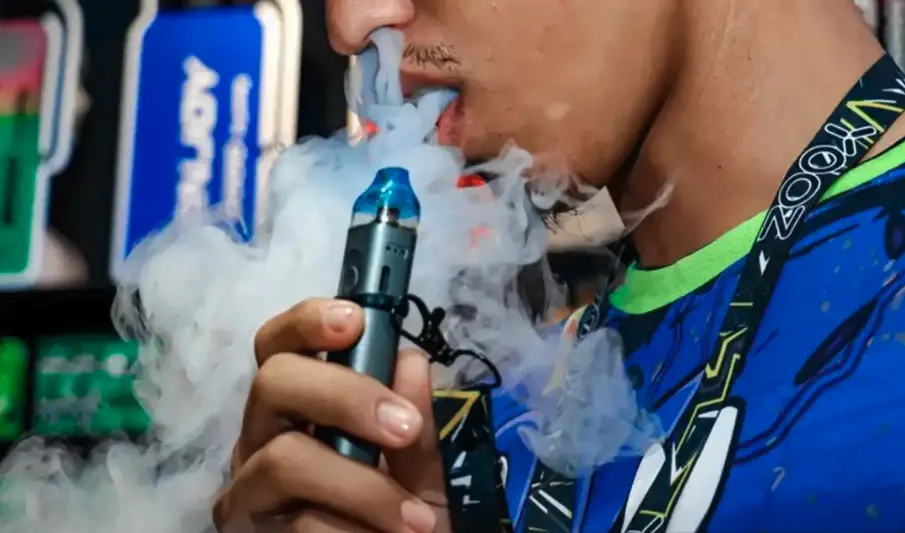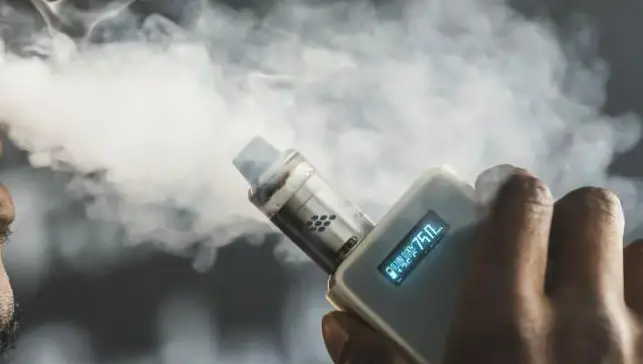First ever Long-Term Vaping Study reveals shocking health risks comparable to smoking

Manchester, UK — Vaping, once hailed as a safer alternative to smoking, may pose health risks just as severe, according to the world’s first controlled study on its long-term effects.
Conducted at Manchester Metropolitan University’s Institute of Sport, the research reveals vaping damages arteries and impairs blood flow in ways strikingly similar to cigarette smoking.
The findings, led by Dr. Maxime Boidin, are sending shockwaves through public health circles. They challenge the notion that e-cigarettes are a harmless substitute.
Study Design: A Closer Look
The study, which concluded in March 2025, involved 60 participants aged 18 to 45, split evenly into vapers, smokers, and non-users.
All had comparable fitness levels to ensure fair comparisons. Researchers tested:
- Blood vessel elasticity using Flow-mediated dilation (FMD), an ultrasound technique measuring artery response to blood flow.
- Cerebral blood flow, assessing how quickly blood reaches the brain.
- Fitness capacity, via oxygen uptake during exercise.
Participants avoided vaping, smoking, and exercise for 12 hours before testing. They consumed only water to eliminate variables. This rigorous setup aimed to pinpoint vaping’s impact on the body.

Alarming Results: Vaping Mirrors Smoking Damage
The findings were stark. Vapers and smokers showed nearly identical damage to artery walls, with FMD tests revealing “flat readings.”
This indicates stiff, impaired arteries—a red flag for cardiovascular disease. Blood flow to the brain was also compromised in both groups, raising concerns about cognitive decline, including dementia risks.
Fitness tests further showed young vapers struggled with oxygen uptake, suggesting broader health impacts.
Dr. Boidin pointed to nicotine as a key culprit, present in both cigarettes and most e-liquids. Vapes also contain:
- Propylene glycol and vegetable glycerine, which may inflame blood vessels.
- Chemical flavorings, linked to oxidative stress that weakens artery linings.
- Trace metals, potentially toxic over time.
“These chemicals aren’t inert,” Dr. Boidin told CNN. “You’re inhaling a cocktail that stresses your vascular system.” She admitted her own surprise, having initially viewed vaping as less harmful.

Health Risks: A Ticking Time Bomb?
Damaged arteries don’t just stay damaged—they worsen. The Mayo Clinic explains that injured artery walls collect blood cells, fats, and cholesterol, forming plaque.
Plaque narrows arteries, blocks blood flow, or bursts, triggering clots. This cascade can lead to:
- Heart attacks, as blood supply to the heart falters.
- Strokes, from disrupted brain blood flow.
- Organ failure, if kidneys or liver lose adequate circulation.
Dr. Boidin also flagged cognitive risks. Poor brain blood flow could impair memory and focus, potentially contributing to dementia over decades.
For young vapers, whose brains are still developing, the stakes are higher. Fitness declines add another layer, limiting physical resilience even in those in their 20s.
The study’s implications are urgent, given vaping’s rise. In the UK, 5.1 million people vape, per the Office for National Statistics.
Over 1 million are non-smokers, drawn by sleek devices and flavors like mango or bubblegum.
Globally, the World Health Organization estimates 1.25 billion tobacco users, with vaping gaining ground fast.
Why Vaping’s Accessibility Worries Experts
Unlike cigarettes, vapes are easy to use indoors. No need to step outside or light up.
Dr. Boidin noted vapers often puff continuously, unaware of their intake. “Smokers finish a cigarette and decide to light another,” she said. “Vapers just keep going.”
This constant exposure may amplify damage, especially since vape clouds deliver nicotine and chemicals in dense doses.
The study suggests vaping’s appeal—its convenience and social acceptance—could be its danger.
Bright packaging and fruity flavors have hooked a generation, with 15.8% of UK 16–24-year-olds vaping regularly. Many never smoked, raising fears of a new addiction epidemic.

Policy Push: Restrict Vapes to Quitters?
Dr. Boidin doesn’t mince words. “Vapes should be a transition tool, not a lifestyle,” she urged.
She advocates for prescription-only access, limited to smokers trying to quit. This would curb recreational use, especially among youth.
The UK’s Tobacco and Vapes Bill, set to ban disposable vapes by June 2025, aligns with such calls. It also targets advertising aimed at teens.
But resistance is fierce. Dr. Marina Murphy, a spokesperson for the UK Vaping Industry Association, called the study’s findings overstated.
“Millions vape safely,” she argued, citing data suggesting vapes carry just 5% of smoking’s risks.
She pointed to Public Health England’s 2015 report, which endorsed vaping as a harm-reduction tool.
Murphy warned that demonizing vapes could push quitters back to cigarettes.
The Science: Not Settled Yet
The Manchester study, while groundbreaking, isn’t final. Its results await peer review, and the sample size—60 people—is modest.
Critics like Murphy argue it lacks the scope to overhaul vaping’s reputation.
Yet Dr. Boidin counters that short-term studies dominate existing research. “We’re only now seeing what decades of vaping might do,” she said.
Other evidence backs her caution. The CDC links vaping to nicotine addiction and lung injury, with 2,807 hospitalizations from vape-related lung issues in the US by 2020.
Johns Hopkins Medicine notes e-liquids can degrade into toxic compounds when heated. Cancer Research UK, while calling vapes less harmful than cigarettes, admits long-term risks are unclear.

Public Reaction: Shock and Skepticism
The findings have rattled vapers. On social platforms like X, users expressed dismay. “I thought vaping was safe,” one posted.
“Now I’m rethinking everything.” Others doubled down, sharing anecdotes of quitting smoking via vapes.
“It saved my lungs,” a user claimed. The divide reflects broader uncertainty—vaping’s risks are real, but its role in harm reduction remains contentious.
Dr. Boidin expects pushback. “People love their vapes,” she acknowledged. “But truth doesn’t care about comfort.” She predicts more will be “horrified” as data spreads.
What’s Next for Vaping?
The study is a wake-up call, but not the final word. The UK government has launched a 10-year study on youth vaping, aiming to track long-term outcomes.
Globally, countries like Australia are tightening rules, restricting vapes to pharmacies. In the US, the FDA faces pressure to crack down on flavored e-liquids, blamed for teen uptake.
For now, Dr. Boidin urges caution. “If you don’t smoke, don’t vape,” she advised.
For smokers, she sees vapes as a brief bridge, not a destination. The Manchester study, set for full publication next month, will likely fuel debate—and policy changes—for years.
As vaping’s allure fades under scrutiny, one thing is clear: those colorful sticks aren’t as innocent as they seem.



































